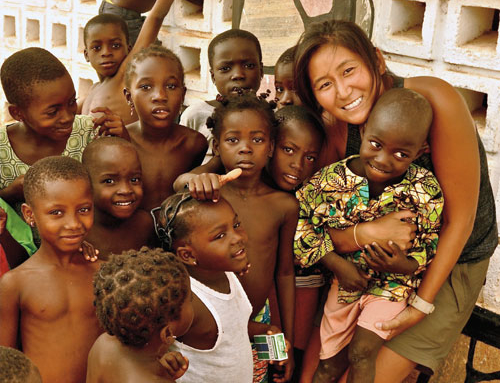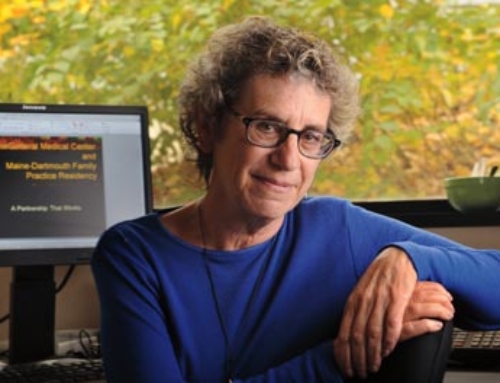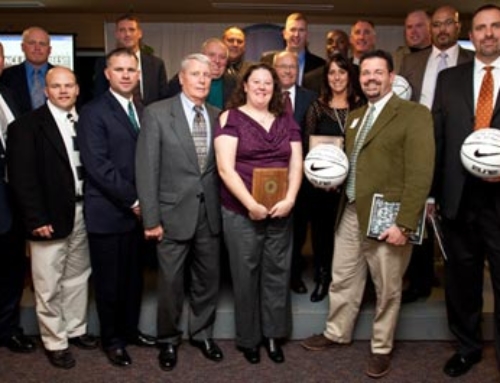 How does one truly pay honor to those who laid the foundation of Saint Joseph’s College? Pay honor to those who successfully built on this foundation? Pay honor to those who faced the multiple challenges of these 100 years gone by and brought them to happy resolution? Of any number of approaches available, I am choosing to go the path of highlighting five turning points in our history.
How does one truly pay honor to those who laid the foundation of Saint Joseph’s College? Pay honor to those who successfully built on this foundation? Pay honor to those who faced the multiple challenges of these 100 years gone by and brought them to happy resolution? Of any number of approaches available, I am choosing to go the path of highlighting five turning points in our history.
The first turning point will introduce you to the birth of our college – a very simple story. In the year 1911, the senior women at Saint Joseph’s Academy approached Sister Mary Xaveria, the directress of the academy, and told her they would like to be effective teachers and asked would she teach them. They were not interested in attending Gorham Normal School, the present University of Southern Maine’s Gorham campus. They wanted their advanced learning to be done under the auspices of the Sisters of Mercy. And what was Sister’s response? Well, of course, we know it was simply “Why not!” A formidable challenge to be sure, but Sister and her colleagues were up to it.
What I believe is another turning point happened during the tenure of our fifth president, Dr. Daniel J. O’Neil, who served in this capacity from 1947-1956. He was a noted scholar, an author, a teacher and an expert in the field of philosophy. His proficiency in logic helped him to persuade the Sisters of Mercy that a new name would help make the college known and, as a result, would increase enrollment. He did not receive a quick response at his first meeting with the Sisters, but did eventually, and … our college was named the College of Our Lady Of Mercy from 1949-1956.
His argument that a new identity would yield increased enrollment brings us to the next “turning point,” the need for expansion! This conversation with the Sisters in charge concluded with the statement that either the college will have to move away from the Motherhouse grounds (for that was where we were located) or the Motherhouse will have to move.
After viewing some large tracts of land that were available … no place seemed to be wholly satisfactory. Then one day…Sister Mary Evangelist and Sister Mary Edwina drove with Msgr. Johnson to look at the Verrill estate in Standish (wherever that was!). After visiting the manor home (today Xavier Hall) and the daughter’s home (today St. George Hall), viewing the golf course and tennis court, they were about to depart for Portland when the real estate agent asked if the Sisters would like to see Mrs. Verrill’s chapel.
On entering, they saw the lovely chapel space that included two – and only two – stained glass windows. One depicted St. John the Evangelist (remember Sister Mary Evangelist) and the other depicted St. Edward the Confessor (remember Sister Mary Edwina – a form of Edward). Well, what other sign could one possibly want as an answer to prayer? Those windows, those sisters, that beautiful location. We purchased the 115-acre estate and the rest is history.
The fourth turning point: … In the late sixties there was an impending crisis – a critically small enrollment and the future did not seem promising. Our president at the time, Bernard P. Currier, knew from his previous position that fewer high school students were choosing single-gender colleges. Should we just operate in a survival mode as long as we can and pray for the best, or should we bite the bullet and assess the possibility of our becoming a co-educational institution. His being a former Marine made him lean strongly on “biting the bullet!” President Currier formed a committee that did the research with various constituents – parents, alumni, faculty, students – as to their thoughts of our changing from an all-women’s college into one for both women and men.
Responses were predominantly in favor of our going down this new path of co-education. One of the constituents that was surveyed by the committee included several all-women colleges that had the experience of going co-ed. The question put to them was: Is there any caveat you would like to give us, if we go in this new direction? The one warning we received unanimously was: “Don’t do it unless you are willing to invest in stronger furniture.” In 1970, we welcomed our first full-time male students and have had not one regret. Men are just wonderful (if you buy stronger furniture!).
The fifth point: Establishing our distance education program in 1976. At that time, there was a great awareness that there were many people already established in their professional work, but more and more having to meet stricter requirements for additional education. They could not possibly withdraw from where they were and enjoy the luxury … of an on-campus education for two or three years. President Currier, who led us into co-education, along with Sister Mary Dolores Sablone, academic dean at the time, seized an opportunity by learning about different responses to these needs that were already being made around the country. They set about designing our own effective responses to this ever-growing population. From 1976 up to the present day, thousands of men and women have enrolled and have been graduated from this side of the academic programs ... now offered online by our college.
Is this the sum total of the wonderful events and happenings, the turning points that are part of the journey of 100 years? In no way. Let me simply say that truly we are standing on the shoulders of giants – our 14 presidents, our many Overseers and Trustees, our benefactors, our faculty past and present, our staff, and our students. All of these met challenging times and, with the help of others, were able to bring us through to positive resolutions. Each … gave of their time, treasure, and talents to build a college for which we can, without reservation, give gratitude to God, St. Joseph and the Sisters of Mercy. Times were not easy, challenges were always around the corner, but we know God was and is with us always. Because of this truth, we cannot and will not fail. Thanks be to God and Our Lady of Mercy.
(Excerpts from Sister Mary George O’Toole’s speech at the Centennial Gala, Oct. 13, 2012.)



